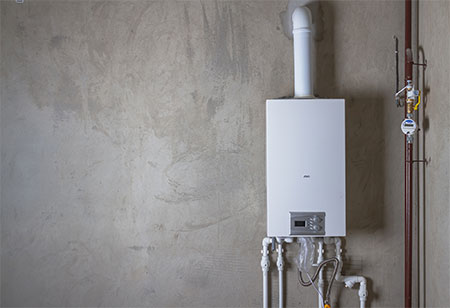
As the chill of winter sets in, the warmth of a gas heater becomes a house- hold necessity. Keeping your gas heater in top condition is not only a matter of comfort but also one of safety and efficiency. Regular maintenance en- sures your unit operates at its best, providing warmth while keeping energy costs low and minimizing the risk of hazardous situations.
Below are essential maintenance tips for your gas heater to keep you cozy and safe during the colder months:
Understand Your Heater’s Basics
Before checking gas and wood heater fans, familiarize yourself with your gas heater. Knowing whether you have a central heating system, a wall unit, or a portable device is crucial, as each type requires specific care. The user manual is an invaluable resource, containing essential information on operation and maintenance tailored to your model.
Keep It Clean
Dust and debris may affect your heater’s performance and can also be fire hazards. Regularly cleaning the exterior of your heater and the surrounding area prevents dust from entering the unit.
If you have a central heating system, changing the filters every few months is essential. For wall units and portable heaters, use a vacuum with a brush attachment to gently remove dust from visible interior components.
Schedule Regular Professional Inspections
Annual check-ups by a certified professional are crucial for both gas and electric heating systems. They can spot issues you might miss, such as gas leaks or electrical faults. A thorough inspection for gas heaters includes:
Checking the heat exchanger for any signs of corrosion or damage. The heat exchanger plays a vital role in the safety and efficiency of your heater, as it separates combustion gases from the air blown into your house.
Ensuring proper venting to prevent the buildup of harmful gases inside your home. Adequate venting is essential for both safety and the efficient operation of your heater.
Verifying the burner’s condition to ensure it is clean and functioning correctly. A well-maintained burner is crucial for complete combustion, reducing the risk of carbon monoxide production and improving efficiency.
These steps are vital for safety and efficiency, ensuring your gas heater operates reliably during the colder months. Regular professional inspections help catch and address minor issues before they escalate into major problems, safeguarding your home and loved ones.
Monitor Flame Color
The color of the flame in your gas heater is a direct indicator of its operating condition. Ideally, the flame should burn with a steady, blue color. A yellow or orange flame suggests incomplete combustion—a condition that reduces the heater’s efficiency and poses serious safety risks by potentially releasing harmful gases like carbon monoxide into your home.
Incomplete combustion can occur for several reasons, including a dirty burner that needs cleaning, obstructions in the burner, or imbalances in the gas-to-air mixture. Such issues disrupt the proper mixing of gas and air, which is essential for complete combustion.
If you notice a yellow or orange flame, it is crucial to turn off the heater and seek immediate professional evaluation and adjustment. A qualified technician can accurately diagnose the cause of the flame discoloration, perform necessary cleanings, or adjust the gas/air mix to ensure your heater operates safely and efficiently.
Neglecting this warning sign can lead to dangerous conditions in your home, underscoring the importance of prompt and professional intervention.
Check For Gas Leaks
Gas leaks are a serious safety concern that requires immediate attention. If you smell gas, which might resemble the odor of rotten eggs, or suspect a leak for any reason, take the following steps without delay:
1) Turn off the heater and the gas supply immediately to prevent any potential hazards.
2) Do not attempt to locate the leak yourself, as this could pose a significant risk.
3) Open windows and doors to ventilate the area, reducing the concentration of gas in the air.
4) Evacuate the area and contact a professional technician to inspect and repair the leak.
Regular leak checks should be an integral part of your maintenance routine, using soap solution around the connections to detect any leaks by the appearance of bubbles. Always prioritize safety and seek professional assistance for repairs and inspections to ensure your gas heater operates safely and efficiently.
Pay Attention To Strange Noises
Unusual sounds coming from your heater, like banging, whistling, or rattling, could indicate problems. Loose components, a clogged burner, or airflow issues often cause these noises. Addressing them promptly can prevent more significant issues down the line.
Inspect The Thermostat
A faulty thermostat can lead to inefficiency and discomfort. If your heater isn’t reaching the desired temperature, or if it’s cycling on and off too frequently, the thermostat might need recalibration or replacement. This is a simple fix that can improve your heater’s performance and efficiency.
Be Mindful Of The Area Around Your Heater
Keeping the area around your gas heater clear is essential for safety and efficiency. Avoid placing furniture, curtains, or other items too close. This not only prevents potential fire hazards but also ensures proper airflow, which is vital for efficient operation.
Conclusion
Maintaining your gas heater is straightforward yet essential. Regular inspections, cleaning, and performance monitoring can extend your heater’s lifespan, improve efficiency, and ensure your family’s safety. Follow these tips to enjoy uninterrupted warmth and comfort from your gas heater throughout winter.
We use cookies to ensure you get the best experience on our website. Read more...